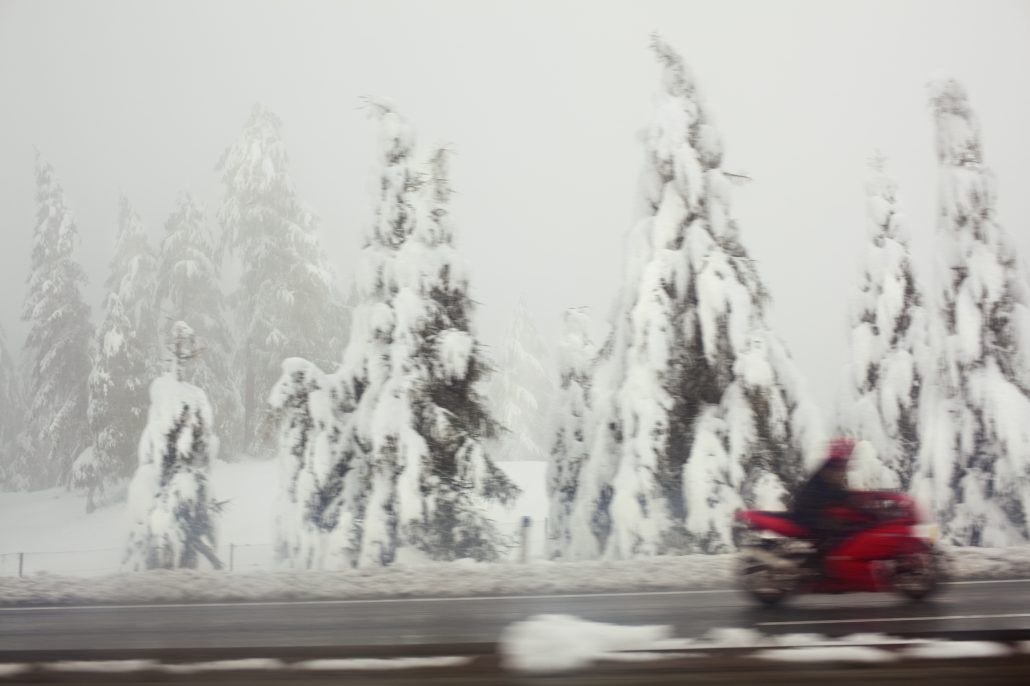American Motorcyclist December 2017
Ask The MSF
Riding In Cold Weather

Photo by Salima Senyavskaya
Q: What’s your advice for riding when temperatures are below freezing? How do I maintain traction? Is it safe to ride on snow or ice?
A: We’ll tackle your last question first. Riding a motorcycle on snow or ice is not something you should plan on doing.
But, if you are on a trip and find yourself facing a snow- or ice-covered road that you cannot avoid, proceed at a walking pace, stay as upright as possible, minimize changes in direction and be prepared to use your feet as outriggers.
Heed “Bridge freezes before road” signs—the wind rushing under and over bridges cools the structure more quickly than the roads leading up to it.
As to your second question, seasonal changes can affect traction. Check your tire pressure more often, because cooler temperatures will lower the pressure as the air contracts inside your tire. Allow plenty of time/miles for the tires to warm up before attempting hard braking and cornering.
Other prudent steps include checking fluid levels more often—especially the coolant in liquid-cooled bikes—and changing your oil, if your owner’s manual calls for a different oil viscosity in colder weather.
And beware of “black ice,” a thin coating of icy glaze on the road surface that is practically invisible to road users. Both tires may move beneath you as you move across a patch, but maintain a relaxed grip on the handlebars and avoid sudden steering inputs.
As to your first question, dress appropriately. Wear quality winter riding gear to stay warm, dry and agile.
If you often ride in the winter, heated gear may be in order, assuming your bike can handle the additional electrical load of “wired” gear. “Non-wired,” heated riding gear with self-contained batteries is also available.
Invest in an adjustable heat controller, if one is not supplied with the gear.
Your first choice in heated gear should be a quality vest. If your core is warm, your limbs are more likely to stay warm.
A full jacket is the second best choice. It will keep you warm, but generally draw more electrical current.
Whatever gear you choose, remember to unplug before dismounting, or you risk damaging the connectors.
Some riders prefer heated grips over heated gloves, because grips are less cumbersome than dealing with electrical tethers and bulky gloves. Select grips with at least a dual-range heat controller for maximum versatility.
A good winter ride can relieve the boredom of “cabin fever” and keep your skills fresh. Prep your bike and adjust your risk-management strategies according to the seasonal variations in your environment.
